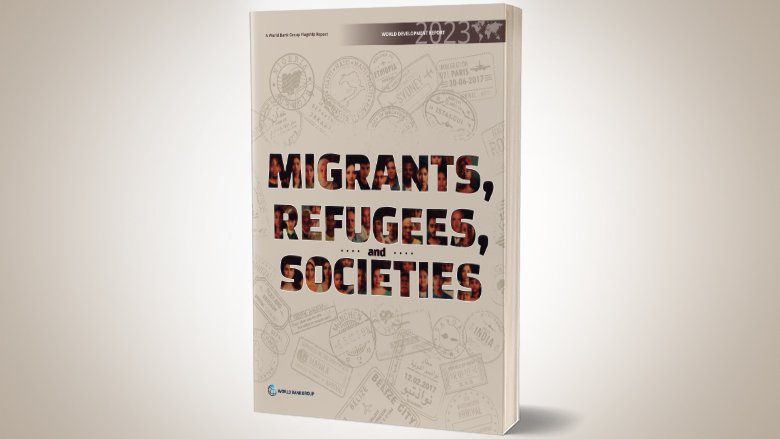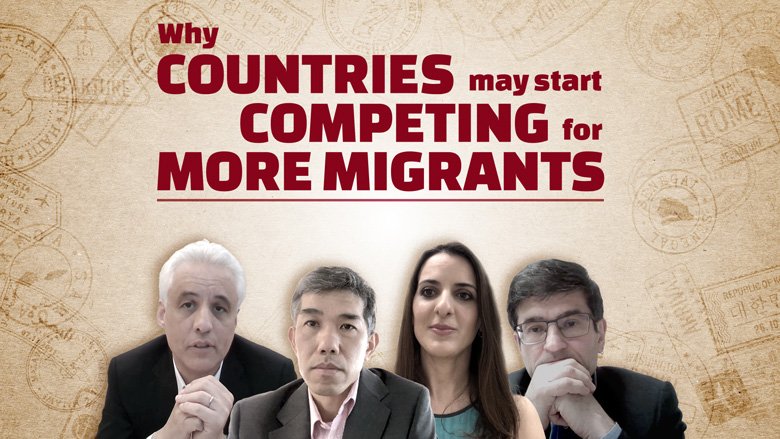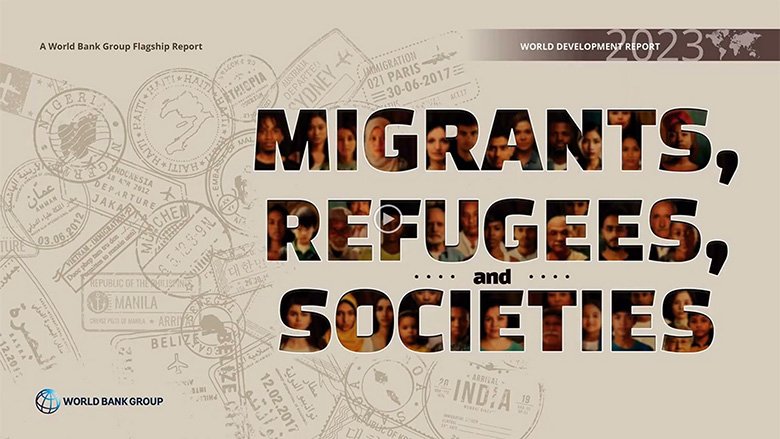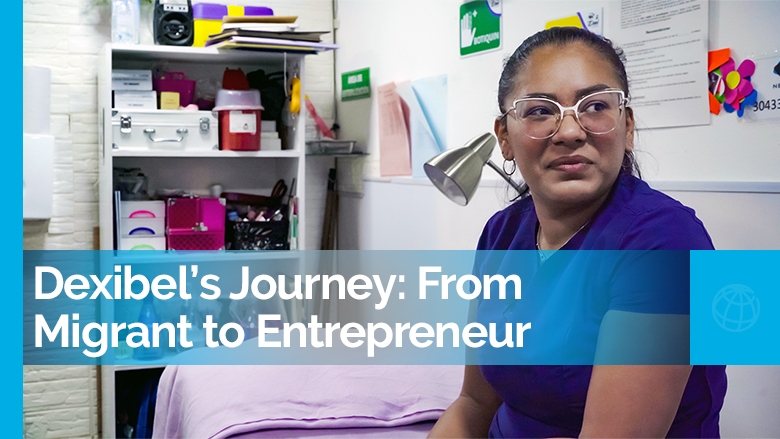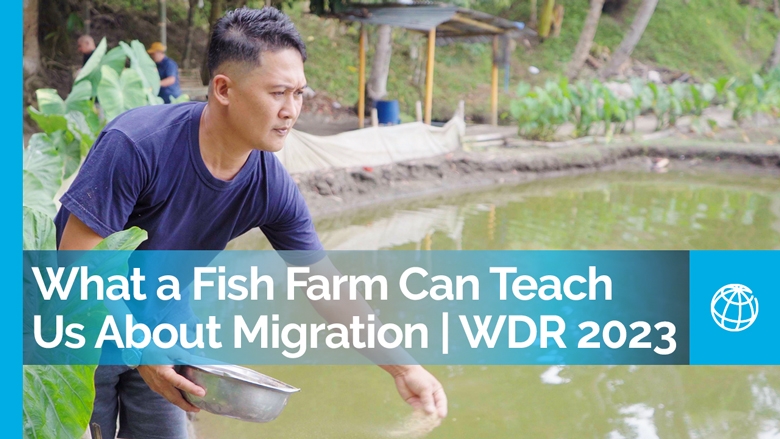MODULE DESCRIPTION
Are there sufficient data on global migration trends? And are they comprehensive enough to help inform and design effective migration policies? This module will: (i) provide an overview of what migration data exist, (ii) highlight the difference between myths and facts about migration (both in origin and destination countries), (iii) discuss the pivotal role of migration data (voluntary and forced migration) in understanding the phenomenon and in designing suitable and effective migration policies by policy makers in origin and destination societies, and (iv) discuss data and trends of related topics including demography, remittances, and forced displacement.
LEARNING OBJECTIVES
Upon completion of this module, participants should be able to:
- Differentiate between myths and facts around migration based on data.
- Be able to provide accurate and insightful reporting on migration trends, patterns, and their impacts on various aspects of society.
- Understand demographic trends around the world, and demographic data, methods and assumptions underlying demographic data and projections.
- Understand the global remittances marketplace, trends and how remittances are sent.
- Understand how remittances data are collected at macro and micro level as well as accuracy issues in collecting methods.
- Gain practical insights into working with or alongside humanitarian organizations dedicated to designing and implementing programs for displaced populations.
AGENDA AND OUTLINE OF LECTURES
A tentative agenda is outlined below. It will be modified according to how the participants progress and the instructor’s evaluation of the participants’ understanding of the material. The module contains 9 lectures that would be covered over three days.
Lecture 1: Introduction to global migration data and misperception in public opinion
Participants will be given an overview of the role of migration data in a global context, the ways in which the collection of migration data has evolved over the years, and the role that migration data plays in the public debate, policymaking, and research. Participants will also learn about the extent to which misperceptions about migration shape public opinion. And lastly, participants will be given an overview of the challenges related to the quality of migration data, including inconsistencies in definitions across countries and within countries over time.
Recommended reading:
- World Development Report 2023 “Migrants, Refugees, and Societies”, Spotlight 2.
- Özden, Ç., Parsons, C. R., Schiff, M., & Walmsley, T. L. (2011). Where on earth is everybody? The evolution of global bilateral migration 1960–2000. The World Bank Economic Review, 25(1), 12-56.
- Docquier, Frédéric, and Abdeslam Marfouk. "International migration by education attainment, 1990–2000." International migration, remittances and the brain drain (2006): 151-199.
- Alesina, A., Miano, A. and Stantcheva, S., (2023). Immigration and redistribution. The Review of Economic Studies, 90(1), pp.1-39.
- Artuç, E., Docquier, F., Özden, Ç., & Parsons, C. (2015). A global assessment of human capital mobility: the role of non-OECD destinations. World Development, 65, 6-26.
- Alesina, A. and Stantcheva, S., (2020), May. Diversity, immigration, and redistribution. In AEA Papers and Proceedings (Vol. 110, pp. 329-334). 2014 Broadway, Suite 305, Nashville, TN 37203: American Economic Association.
Lecture 2: Methodological divergences in data collection/sources
Participants will be given an overview of the data sources and different collection methods used to document the size of migration and migration trends. It will include sources such as censuses, household and labor force surveys, population registers and administrative data. New data sources, including high resolution data, mobile phone data, etc., will also be discussed. Participants will be given an overview of the challenges of harmonizing migration data (timing and regularity of data collection, accessibility and privacy issues). The course will then provide a synthesis of current international initiatives being implemented or discussed to harmonize migration data, the success stories and the challenges of global cooperation. The course will also highlight the role of international organizations in standardizing data practices.
Recommended reading:
- World Development Report 2023 “Migrants, Refugees, and Societies”, Spotlight 2.
- Abel, Guy J. "Estimating global migration flow tables using place of birth data. (2013). " Demographic Research 28: 505-546.
- Abel, Guy J., and Joel E. Cohen. (2019). "Bilateral international migration flow estimates for 200 countries." Scientific data 6.1: 82.
- Abel, Guy J., and Nikola Sander. "Quantifying global international migration flows”. (2014). Science 343.6178: 1520-1522.
- Bircan, T., (2021). Finding the gap: addressing the international migration data gaps. Policy Brief.
Lecture 3: Hands-on exercises (WDR bilateral migration matrix)
Participants will be given practical exercises based on the WDR’s bilateral migration matrix to gain a better understanding of the migration data (immigration and emigration rates by gender, education level, positive selection index across migration corridors, etc.). Participants will also be given an overview of the factors underlying migration trends around the world.
Recommended reading:
- WDR Bilateral migration matrix 2000-2020: https://www.worldbank.org/en/publication/wdr2023/data
- Docquier, F., Lohest, O., & Marfouk, A. (2007). Brain drain in developing countries. The World Bank Economic Review, 21(2), 193–218.
Lectures 4&5: Demography
Participants will be given an overview of demographic trends in the world (age structure, fertility rates, dependency ratios, etc.); demographic databases that exist; different scenarios developed by the UN Population Division; and their implications for population projections. Participants will then be given practical exercises to gain a better understanding of demographic data (construction of the age pyramid, fertility trends, dependency ratio trends, etc.). Participants will also be given an overview of the factors underlying demographic transitions where they are taking place. Finally, participants will be given an overview of the link between demographic imbalances and migration.
Recommended reading:
- 2023 WDR “Migrants, Refugees, and Societies”, Chapters 3, 4, 5, and 6.
- United Nations, Department of Economic and Social Affairs, Population Division. World Population Prospects 2022: Methodology of the United Nations population estimates and projections (UN DESA/POP/2022/TR/NO. 4). July 2022.
- Doepke, Matthias, Anne Hannusch, Fabian Kindermann, and Michele Tertilt, “The Economics of Fertility: A New Era”, in Handbook of the Economics of the Family, Volume 1: edited by S Lundberg and A Voena, Elsevier B.V., March 2023, pp.151-254.
Additional readings:
- United Nations, Department of Economic and Social Affairs, Population Division. World Population Prospects 2022: Ten Key Messages. July 2022.
- Stein Emil Vollset, Emily Goren, Chun-Wei Yuan, Jackie Cao, Amanda E Smith, Thomas Hsiao, Catherine Bisignano, Gulrez S Azhar, Emma Castro, Julian Chalek, Andrew J Dolgert, Tahvi Frank, Kai Fukutaki, Simon I Hay, Rafael Lozano, Ali H Mokdad, Vishnu Nandakumar, Maxwell Pierce, Martin Pletcher, Toshana Robalik, Krista M Steuben, Han Yong Wunrow, Bianca S Zlavog, Christopher J L Murray. "Fertility, mortality, migration, and population scenarios for 195 countries and territories from 2017 to 2100: a forecasting analysis for the Global Burden of Disease Study." The Lancet 396, no. 10258, October 2020, pp. 1285-1306.
- Munz, Rainer. Demography and Migration: An Outlook for the 21st Century. Migration Policy Institute, Policy Brief No .4, September 2013
Lectures 6&7: Remittances: definition, measurement and aggregate trends
Participants will be given an overview of the definition of remittances, who sends and receives remittances and through what channels, and the costs involved. Participants will then be taught how remittances are measured (balance of payments vs. household data), particularly how different countries choose to calculate and report both inflows and outflows. Participants will be given an overview of what aggregate estimates of remittances look like, followed by a discussion on the methodological challenges associated with their estimates.
Recommended reading:
- 2023 WDR “Migrants, Refugees, and Societies”, Chapter 5, Spotlight 5.
- Statistical Office of the European Communities, and International Monetary Fund, eds. 2009. International Transactions in Remittances: Guide for Compilers and Users. Washington, D.C: International Monetary Fund.
- De Arcangelis, Giuseppe, Alexander Fertig, Yuna Liang, Peter Srouji, and Dean Yang. 2023. “Measuring Remittances.” Journal of Development Economics 161 (March): 103004.
- Gibson, John, and David McKenzie. 2017. “How Reliable Are Survey Estimates of Remittances? Evidence from a Cross-Reporting Survey Exercise.” Migration Studies 5 (1): 97–115. .
- Rapoport, Hillel, and Frédéric Docquier. 2006. “The Economics of Migrants’ Remittances.” Handbook on the Economics of Giving, Reciprocity and Altruism. Elsevier.
Lectures 8&9: Forced displacement
Participants will be given an overview of the legal framework defining refugees, asylum seekers and internally displaced persons. Participants will then be introduced to the global trend of forced displacement around the world, focusing on countries of origin and host countries, and the available data. The presentation will then discuss the challenges and rights of internally displaced persons (IDPs) through various case studies.
Recommended reading:
- 2023 WDR “Migrants, Refugees, and Societies. Chapter 2, Spotlight 7
- Global Trends Report 2022 UNHCR
- Ibáñez, and A. Moya (2009). “Vulnerability of Victims of Civil Conflict: Empirical Evidence for the Displaced Population in Colombia”. World Development 38(4): 647-663.
- Ibáñez, A.M. and C.E. Vélez (2008) “Civil Conflict and Forced Migration: The Micro-determinants and the Welfare Losses of Displacement in Colombia”, World Development 36(4): 659-676.


